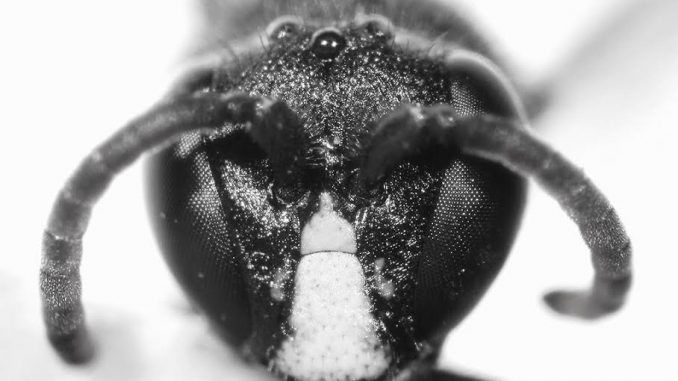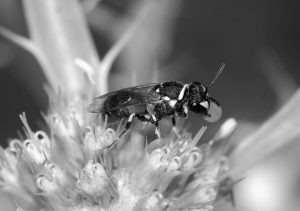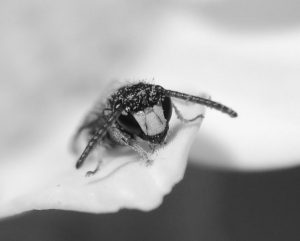


The U.S. Fish and Wildlife Service has officially named seven yellow-faced bees native to Hawaii as endangered species.
The new rule designating protections for the species was published on Friday, Sept. 30 in the Federal Register. According to The Xerces Society, who advocated for their designation, these are the first bees in the country to be protected by the Endangered Species Act.
The bees look like small wasps, distinguished by the plumose (branched) hairs on their bodies that are longest on the sides of the thorax. They are also known for their yellow-to-white facial markings.
According to a fact sheet provided by the University of Hawaii’s Master Gardener Program, these are the only bees native to Hawaii, meaning they reached Hawaii on their own. The U.S. Fish and Wildlife services reports that the populations continue to shrink. The genus Hylaeus anthrcinus were once found in dozens of locations around the islands, but now only 15 remain. Additionally, Hylaeus hilaris and Hylaeus kuakea are now only found in one location in Hawaii.
Contributing factors to the shrinking bee populations include habitat destruction due to urbanization and the introduction of non-native animals and predators, introduction of nonnative plant species, wildfires and natural events such as hurricanes, tsunamis and droughts.
The bees’ protected status will allow authorities to implement recovery plans, access funding for the cause and limit the harm from outside sources. The rule will go into effect at the end of the month and will also grant endangered status to 39 plant species, the band-rumped storm-petrel, orangeblack Hawaiian damselfly and the achialine pool shrimp.
Despite their status, these bees remain persistent and 11 new native species have been discovered in the past 15 years.
The yellow-faced bees are not the only pollinators under threat. Forty percent of the world’s invertebrate pollinator species, which encompasses bees and butterflies, are facing extinction. About 75 percent of the world’s food supply depends at least partly on pollination.
Organic beekeeper and “Bee Doctor” for Honeybee Lives in New Paltz Chris Harp said that local honeybees are not on the endangered species list, but they are headed in that direction.
“The number of bees lost each year is growing considerably,” he said.
Harp attributed the honeybees’ decrease in population to factors like climate change, pesticides and fungicides. He said that people need to be more knowledgeable in terms of what they put on their lawns.
“A beautiful green lawn is a detriment to the environment in the long run,” he said.
People can learn more about what they can plant in their lawns to help nourish honeybees, but also need to be mindful of where they purchase these plants.
Harp said that although companies like Lowe’s, Walgreen’s and the Home Depot made statements that they will stop using neonicotinoids on their flowers to make them look more appealing, they still used on a huge percentage of flowers by other companies. Neonicotinoids are toxic to honeybees and the bees ingest them during their interaction with plants that they have been used on.
“They take that poison back to their hive and it feeds their larva, feeds their babies and then results in weakened bees and loss of colonies,” Harp said. “People need to be far more knowledgeable about what they’re putting out there. Even when they’re trying to help the bees, they may not be helping the bees.”
Harp believes that giving honeybees endangered status would help protect them, but it would cause problems for farmers as they would have to change their use of pesticides.
“In doing so would cause a rift in the agricultural community…” he said. “They would have to completely switch over their protocol for farmers.”
For more information about the honeybee population native to the Hudson Valley, visit Harp’s website HoneybeeLives.org or visit the Honeybee Lives Facebook page.
